May 17th, 2017
Only the Smart Survive.
What to consider when creating for the IoT.
Back in 2008, the world was downloading apps at an insane rate. All of my clients, regardless of need, seemed to be asking for apps to be developed. But with all of these apps, a trend began to rise to the surface. On a lot of our phones, many weren’t being used. In fact, most were getting deleted. Only the good apps seemed to stick around.
Fast forward several years (and more than two million apps in the app store later) and I’m noticing some parallels with our current environment and the rapid growth of the consumer side of the Internet of Things (IoT). Much like the influx of apps back in 2008, experts are estimating that we’ll see up to 200 billion connected objects by 2020 compared to 2 billion in 2006. So what does this have to do with creating for the IoT?
Well, admittedly, I’m not an expert on the subject, but that’s why I’m using the app analogy. I think we can take some of the learnings from that experience and apply them to today. If you’re working on that next great connected thing, think about some of the apps that have stood the test of time on your phone. Chances are, they have some of the following characteristics.
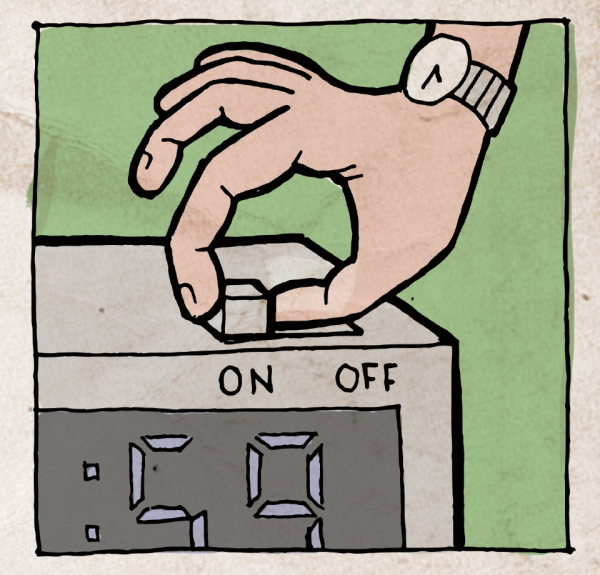 It’s Intuitive
It’s Intuitive
The IoT user experience is supposed to integrate into our lives to help make decisions and gather intel easier, so using your product should come naturally to the consumer. If there’s a sharp learning curve, or it’s just frustrating to use, you’ve already failed.
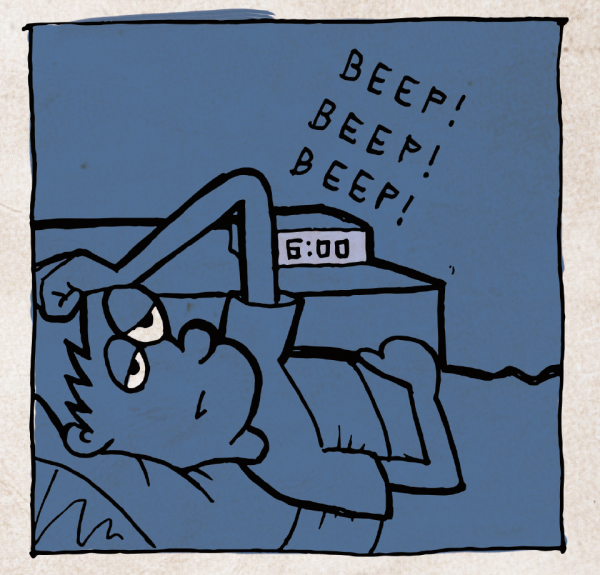 It Solves a Problem
It Solves a Problem
Again, these products are being made to integrate into our lives. Just because you can view the weather on your coffee maker, or program it from your phone, doesn’t make it a valuable product. What if that coffee maker received data from your alarm clock and bed to automatically brew you a cup of Joe when you wake up? I know a thousand coffee addicts who would find value in that.
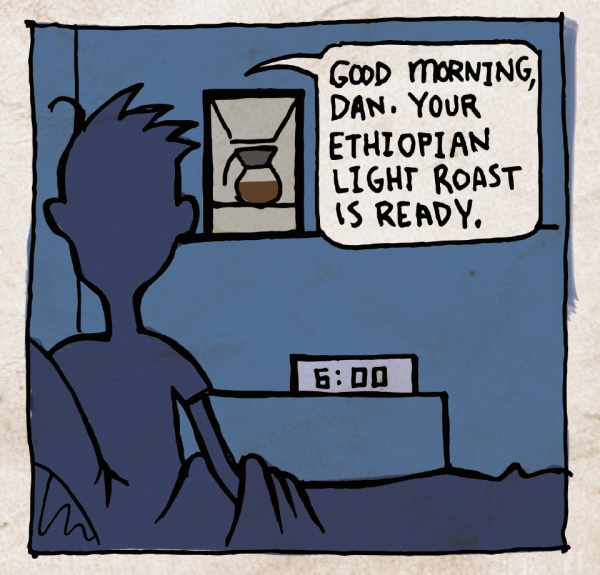 It’s Intelligent
It’s Intelligent
The point of connecting all of these devices is not so we can binge-watch the next season of Stranger Things on our refrigerator. It’s about sharing data and using it in intelligent ways that adapt.
May 17th, 2017
Natural Language Processing
For years, voice dictation and commands had been available to users, and we were used to them not really understanding us. There’s only so many times you’re willing to use unnatural and rigid speech patterns only to find that the computer missed your point entirely, before you give up on it and go back to typing. But in 2013, Apple introduced Siri to the world – a device that actually understood you, and, more importantly, your context! And now we have Alexa (Amazon), Cortana (Microsoft), Watson (IBM) and Google (interestingly the only one to not brand their service as an individual).
This is what’s known as Natural Language Processing.
The ability for computers to infer our meaning, context and intent is a veritable holy grail for marketers. Every smartphone user is already walking around with it in his or her pocket. As the practical and technical barriers of understanding and actually hearing you continue to erode, users will come to verbally interact with computers more and more. So take advantage.
December 29th, 2016
Let’s set the record straight.
“Nuh uh. No way. That’s not true.”
If it were that easy to shut down all of the marketing myths we’ve heard over the years, this issue of Thinking wouldn’t exist. Unfortunately, though, that’s not the case. To set the record straight, we’ve compiled nine of the most common myths we could think of and we had our staff give their professional opinions.
But the truth might sting a little. It’s time everyone knows. So grab a blanket, cuddle up and get ready to get your myths blown.
December 29th, 2016
Myth: If You Build It, They Will Come
You did it! You launched your website. Now, you have a decision to make. A website that brings you clients and revenue is an ongoing investment in time and dollars. Do you have the time and desire to tackle this? Or should you hire an expert?
Paid Search
Search will always be a key driver for website traffic. And when your site is new, paid search is the only way you are going to show up in search results. It is worth it to invest money in paid search. If your site generates revenue for you, be prepared to always have some level of paid search.
SEO
Beyond paid search, SEO is about more than identifying a handful of keywords and putting them all over your site. To find the right keywords, consider doing a competitive keyword analysis for your site and your competitors.
Site Content
Create original content for people, not search engines. Better content means your site is more likely to get search preference over sites only loaded with keywords. Engage your readers and offer solutions and answers. Show them how you are that solution.
Local Search
Finally, up your local search game. Take it off-line by attending local events and getting involved. Participate in the community by writing blog posts and sharing the love with other local businesses. This will help you get inbound links from local news, other businesses, or community sites. Combine these inbound links with paid search and you will see results through increased traffic.
Conquering everything explored here yourself might seem more cost effective, but that isn’t always the case. Know what you can handle, and what is better left to the experts. Paying someone to tackle search engine optimization, for example, could save you loads of time and money while bringing you better results. Be prepared to budget ongoing dollars to keeping your site updated, functioning and in front of your customers.

December 29th, 2016
Myth: Everyone Fast Forwards
In an age of “me,” people have increasingly more options to satisfy their “I need it now” or “I want it now” mentalities. This is especially true when they watch TV. Viewing platforms are changing by the minute, and consumers now have more device and platform choices when it comes to how and when they view their favorite programs.
But are people really trying to avoid ads? Even with increasingly longer commercial breaks and a greater disruption of viewing experiences, millions of people continue to watch live television.
According to a recent Nielsen study (May 2016), live television viewing remains the preferred method to watch favorite programming. Breakouts by generation show live television viewing with non-skippable commercial breaks is still 2 to 3 times higher than time-shift TV, where you can fast forward through the commercials.
- Millennials spend an average of 95 hours a month watching television and only 18 hours of this is time-shifted.
- Gen Xers spend an average of 132 hours a month watching television and only 25 hours of this is time-shifted.
- Baby Boomers spend an average of 184 hours a month watching television and only 28 hours of this is time-shifted.
What about Roku, Apple TV or Chromecast? While these devices are growing in popularity as a way to watch programs with limited or commercial free breaks, these devices are still only in about 20 percent of all TV households. Or, in other words, only 10 to 30 percent of the viewers’ TV time.
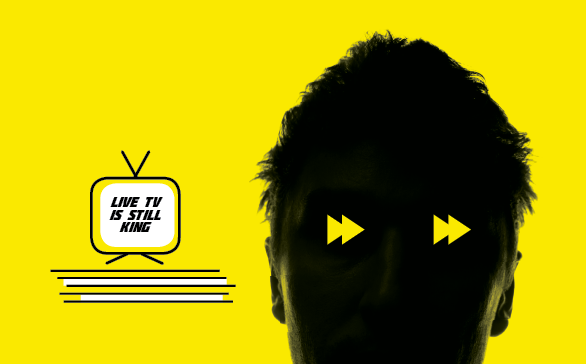
December 29th, 2016
Myth: Nobody Reads Copy
Okay, I’m going to set the myth straight. People read copy, people. You’re reading this, aren’t you? The problem is, people are very selective when it comes to what they read. And how much they read. But there are a few tricks (if you will) that I’ve learned over the years, and I’m going to be nice and share them with you now. So do me a favor. Keep reading.
Hierarchy is everything.
As hard as it is for me to admit, not everything I write bears the same weight in terms of importance. So I think about my audience and what’s important to them, then I get to the point. Quickly. The truth is, people skim, so you need to call out key takeaways right off the bat. Tell them right away how it benefits them. Then maybe, just MAYBE they’ll keep reading.
Hierarchy Tip: Bold. Italics. Underline. ALL CAPS. Larger font. Those are your weapons of choice. But use them sparingly. All of them at once is OBNOXIOUS.
Edit. Edit. Edit.
Here’s the thing about an ad – it’s not saving the world. You might think that everything is fascinating and will impress the reader, but it won’t. 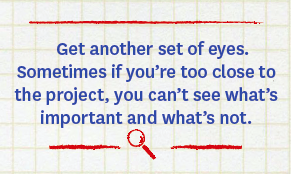 Just think about what will appeal to them, and take out all the other crap.
Just think about what will appeal to them, and take out all the other crap.
Editing Tip: Get another set of eyes. Sometimes if you’re too close to the project, you can’t see what’s important and what’s not. Then listen. As much as it hurts.
Adjust to your medium.
Last, but certainly not least, understand where your message will live. Not every medium works the same. A print ad or landing page is a great place to include more information, while too much information on a billboard can render it useless. Your best bet: just be mindful of the obstacles for each medium, and try to work that to your advantage.
Media Tip: While there are challenges that come with each medium, there is also a lot of opportunity. Get creative. A great example I’ll never forget was in 2006 when the Cartoon Network advertised a new television show by creating outdoor boards that simply read “I pooted.” The peculiarity of the line lured curious passersby to google the two-word phrase, which the network purchased on AdWords to ensure top search results. A genius ploy to move their audience from a restricted medium to one that allows for more detail. Plus, it made people giggle. #winwin

December 29th, 2016
Myth: Everything Must Be Above the Fold
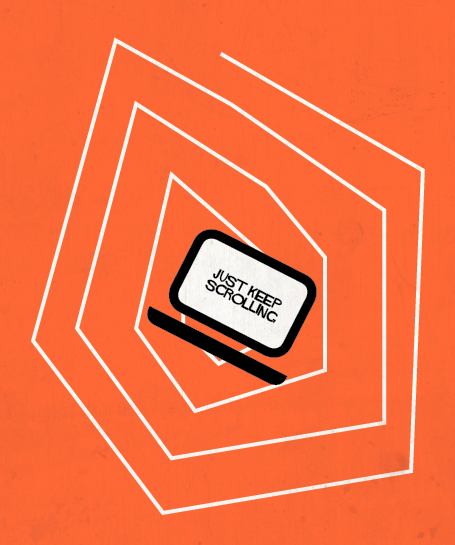 Above the fold: a term adopted for the web from the convention of positioning the most important information on the front page above the fold of a newspaper. In the context of the web, above the fold refers to the visible portion of a webpage before scrolling. Using the above-the-fold strategy of content organization made sense when computer monitors shared similar screen sizes, but in today’s technology-driven culture, designing above the fold for a shared screen size is impossible. Consumers of the internet have opportunities to visit websites on desktop computers, laptops, tablets, phablets and phones.
Above the fold: a term adopted for the web from the convention of positioning the most important information on the front page above the fold of a newspaper. In the context of the web, above the fold refers to the visible portion of a webpage before scrolling. Using the above-the-fold strategy of content organization made sense when computer monitors shared similar screen sizes, but in today’s technology-driven culture, designing above the fold for a shared screen size is impossible. Consumers of the internet have opportunities to visit websites on desktop computers, laptops, tablets, phablets and phones.
With the differences in screen size and resolution, the above-the-fold strategy should be reconsidered. Content organization should not be limited to trying to squeeze content into a viewable portion of a page that users naturally know how to interact with.
The UK digital user experience firm, cxpartners, conducted their own study to examine the above-the-fold myth. They used eye tracking to come to several conclusions about how people use websites. One conclusion they found was that one of the most often viewed parts of a webpage is the scroll bar. 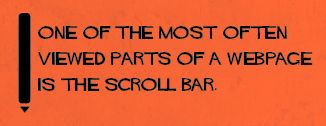 Users know that webpages scroll and expect that behavior when visiting a website. Another conclusion found was that having less content above the fold may drive page visitors to scroll and explore more content below the fold.
Users know that webpages scroll and expect that behavior when visiting a website. Another conclusion found was that having less content above the fold may drive page visitors to scroll and explore more content below the fold.
Tracking user experience and interaction isn’t just limited to studies by consulting firms. There are services like Lucky Orange that make these analytics available to you. It offers heatmapping, a visual representation that tracks clicks and cursor movement. By analyzing heatmaps of users visiting a site, you can find out what content is most important to users, and have insights into how those users digest the content.
Abandoning the above-the-fold mentality and actively monitoring how our websites are used, we are open to explore the freedom of space that the internet allows. Our sites aren’t limited by the physical boundaries of the newspaper page and we shouldn’t treat them as if they were. People know how to use webpages and we need to respond to that by introducing space and imagery in our content designs to deliver better organized content that is pleasing to digest.
December 29th, 2016
Myth: Marketing and Advertising are the Same Thing
Short answer: Advertising is just one component of marketing.
Long answer: Merriam-Webster Dictionary defines “advertising” and “marketing” as the following …
- Advertising: something that is shown or presented to the public to help sell a product or to make an announcement.
- Marketing: the activities that are involved in making people aware of a company’s products, making sure that the products are available to be bought, etc.
Basically, that means marketing is everything that gets a product into the hands of consumers, while advertising is the portion of that process that publicly shows the product to people.
To take that a step further, many experts also say that advertising is paid for – like television, radio, print, outdoor, etc. Adding this caveat means that marketing not only includes market research, product pricing, distribution tactics and customer service, but it also includes public relations, community involvement and media planning and buying. All in addition to advertising.
When defined as such, it is easy to see why people get them confused. Many “advertising agencies,” including Bozell, cross the line into some aspects of marketing. They might help a client with public relations and market research in addition to advertising. They might help plan events or encourage community involvement. Likewise, many businesses don’t merge all these components into one marketing department. Many separate customer service and distribution into their own departments all together.
There is nothing innately wrong with either of these situations. However, every business must make it a priority to ensure that all of the elements of marketing, including advertising, are communicating and working together to give the end consumer a consistent experience. If market research has given you an insight into what price you should set for a particular audience, it will probably also help the advertising team determine how to communicate to that audience. Plus, spending millions of dollars on an advertising campaign will do nothing to improve sales if the product isn’t available on the shelf.

December 29th, 2016
Myth: All Press is Good Press
Let’s face it. When we say “all” press here, we of course mean “bad” press. And that’s really the question at hand: is it ever a good thing to be in the spotlight for a bad reason? The answer: it depends.
The good news about bad news is people are listening. They want to hear what you have to say, which presents your company with an opportunity – a stage, if you will. Take advantage. Minimize the negative press, address it right away, and address it in a way that your audience will appreciate.
A good example of bad press gone bad.
Recently, Wells Fargo was in the media for opening two million fake accounts without customers’ consent. When news hit the stands, the bank chose to avoid responsibility and, instead, initially blamed the incident on its employees. In turn, customers and consumers were appalled, resulting in a 44 percent decrease in account openings less than three months after the story came out.
A good example ofbad press gone good.
When Reese’s rolled out its holiday line of Christmas-tree-shaped Reese’s Peanut Butter Cups, the shape was far from tree-like. So much so that people began complaining and calling out the candy on social media for being ugly. In response, Reese’s created the playful #AllTreesAreBeautiful campaign, which essentially celebrated the unexpected shape and brought awareness to “tree shaming.” Reese’s embraced the mistake and people loved them for it.
The lesson.
Your reaction to bad press is everything. Respond immediately, take responsibility and tell people what you’re going to do to fix it. Don’t be afraid to show some humility, and don’t be afraid to take some risks. More often than not, people respond positively to that.

December 29th, 2016
Myth: Fresh Creative Keeps Your Marketing Effective
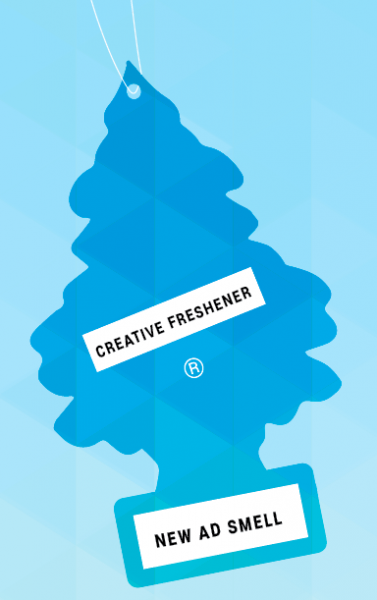 There’s an apocryphal story about Henry Ford – that he told his ad manager he was tired of seeing a particular Ford ad and it was time to create a new one. But the ad hadn’t appeared in public yet. He was just tired of seeing it in interminable internal meetings.
There’s an apocryphal story about Henry Ford – that he told his ad manager he was tired of seeing a particular Ford ad and it was time to create a new one. But the ad hadn’t appeared in public yet. He was just tired of seeing it in interminable internal meetings.
The lesson any marketer can take away from this anecdote: YOU’RE NOT THE AUDIENCE. Consumers will never pay as much attention to your advertising as you do. Before you decide (in a vacuum) that you need fresh creative, ask yourself why you think you need something new:
Is it working? Is your strategy still the same? Has your audience changed? Have you redesigned your product?
Maybe it isn’t your creative that’s burned out. Maybe it’s you.
As much as I’d like to make you new stuff (that’s the most fun part of the job, after all), unless there’s been a major change in business (product redesign, competitive shift, new CMO*) give serious thought before junking your ad campaign. Just because you may be tired of it doesn’t mean the market is.
Some of the world’s most successful ad campaigns are also, not coincidentally, the longest running. MasterCard’s “Priceless” first appeared in 1997. Avis’ “We Try Harder” ran for 50 years before it was dropped (inadvisably, in my opinion). Master Lock’s iconic “tough under fire” TV ad ran unchanged for 22 years.
Consistency in your advertising can be a key component of a brand message. It’s the best way to instill trust in your brand, because people want to buy what feels comfortable, safe and familiar. You can become part of the vernacular. Get in Jimmy Fallon’s monologue. Or maybe even become a meme.
If it ain’t broke, don’t fix it. And if it is broken, call us. We’ll be happy to make something shiny and new.
*On average, there’s a 7-month window between the hiring of a new CMO and the firing of the old ad agency.


